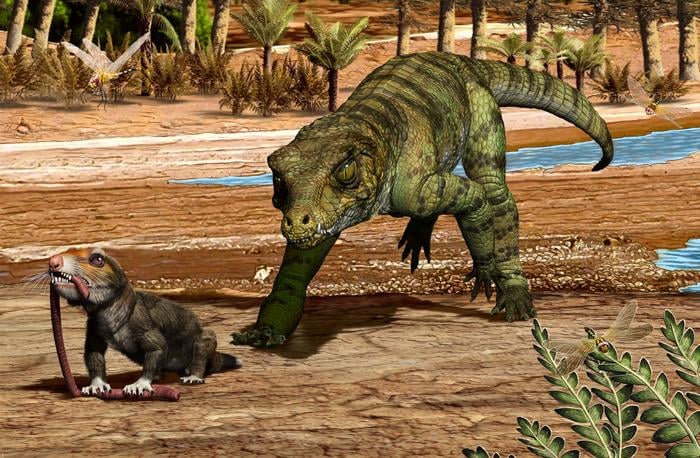What if the secret to surviving planetary catastrophe was hiding in the jaws of one of Earth’s most ancient predators? New research suggests that crocodylians—the group including modern crocodiles, alligators and gharials—survived two global mass extinction events thanks to their remarkable dietary flexibility, a trait that could inform today’s conservation efforts.
Despite their modern reputation as unchanging “living fossils,” crocodylians emerge from this study as evolutionary masters of adaptation, capable of dramatic lifestyle shifts when planetary conditions demand it.

“Lots of groups closely related to crocodylians were more diverse, more abundant, and exhibited different ecologies, yet they all disappeared except these few generalist crocodylians alive today,” explains Keegan Melstrom, lead author and assistant professor at the University of Central Oklahoma, who began the research as a doctoral student at the University of Utah.
The study, published April 16 in the journal Palaeontology, reconstructs 230 million years of crocodylomorph dietary patterns by analyzing fossilized skulls and teeth from 99 extinct species and 20 living crocodylians. The research reveals that behind today’s uniform-looking crocodiles lies a hidden history of remarkable ecological diversity.
During the time of dinosaurs, crocodylomorphs occupied an astonishing array of ecological niches. “After that, it goes bananas,” said Melstrom. “Aquatic hypercarnivores, terrestrial generalists, terrestrial hypercarnivores, terrestrial herbivores—crocodylomorphs evolved a massive number of ecological roles throughout the time of the dinosaurs.”
When the end-Triassic extinction struck about 201 million years ago, the terrestrial generalists—those with flexible diets—survived while specialized groups perished. Similarly, when the asteroid impact wiped out non-avian dinosaurs 66 million years ago, the semiaquatic generalists persisted while most specialized crocodylomorphs vanished.

The research could have implications for conservation during our current biodiversity crisis, which many scientists consider a sixth mass extinction. Species with flexible diets might have better survival odds, though the researchers caution against oversimplifying the relationship.
“There’s a danger of trying to draw conclusions from millions of years ago and directly apply it to conservation. We have to be cautious,” notes co-author Randy Irmis, curator of paleontology at Natural History Museum of Utah. “If people study mammals and reptiles and find the same patterns with respect to extinction survival, then we might predict that species with a generalist diet may do better.”
For critically endangered crocodylians like the Gharial or Cuban Crocodile, dietary flexibility could provide a survival advantage—but only if their habitats remain intact.
“When we see living crocodiles and alligators, rather than thinking of ferocious beasts or expensive handbags, I hope people appreciate their amazing 200+ million years of evolution, and how they’ve survived so many tumultuous events in Earth history,” said Irmis. “Crocodylians are equipped to survive many future changes—if we’re willing to help preserve their habitats.”
If our reporting has informed or inspired you, please consider making a donation. Every contribution, no matter the size, empowers us to continue delivering accurate, engaging, and trustworthy science and medical news. Independent journalism requires time, effort, and resources—your support ensures we can keep uncovering the stories that matter most to you.
Join us in making knowledge accessible and impactful. Thank you for standing with us!

